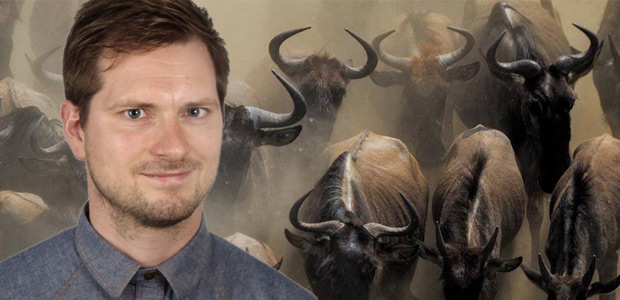ERC Starting Grant to Rasmus Heller
Rasmus Heller, a tenure track Assistant Professor at the Section for Computational and RNA Biology, Department of Biology, has been awarded a Starting Grant worth €1.5 million from the European Research Council (ERC).
Rasmus Heller is a graduate student and PhD student of University of Copenhagen. After a post doc period in Portugal he returned to the University of Copenhagen in 2014, where he was recently hired in a tenure track position. He has previously received the Villum Young Investigator award and is currently holding a DFF Sapere Aude Research Leader grant. His general research interests are population and evolutionary genetics of large mammals.

The ERC Starting Grant 'Genetic admixture and its impact on domestication in the Bosgenus' will run for five years starting in 2020.
It has recently become clear that animal species exchange genetic material much more frequently than we thought. Such genetic exchange, or admixture, can be either beneficial, neutral or harmful for the involved populations. It is not clear how often or under what conditions inter-species admixture is beneficial for the recipient populations, but several examples of such adaptive introgression have been identified by analyzing genomic data from humans and other well-studied species.
The genus Bosis unique in the animal kingdom for having experienced no fewer than five independent domestication events. Well-known domesticates include cattle, water buffalo and yaks. These live side by side with their closest relatives, the wild Bosspecies, in southern and eastern Asia.
The ERC grant will be used to investigate which of the Asian Bosspecies have exchanged genetic material over the course of evolution, which particular genomic regions have crossed species boundaries and how the domestication process has influenced the selection landscape on introgressed elements.
Rasmus Heller has recently published three articles in the acknowledged scientific journal Science, Vol 364, Issue 6446.
Read the press release here.
Kontakt
Rasmus Heller
Bioinformatics & RNA Biology
Department of Biology
Mail: rheller@bio.ku.dk
Tel: +45 29299227
Helle Kirstine Blæsild
PR & Kommunikation
Department of Biology
Mail: kommunikation@bio.ku.dk
Tel: +45 28752076
